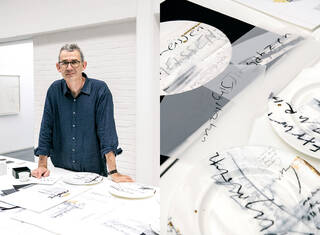Join master potter and writer Edmund de Waal as he takes us on a journey into the history of porcelain.
Through four extraordinary objects from our collection – a blue and white ewer, a delicate white cup, Wedgwood's First Day's vase, and a sturdy floral mug – Edmund de Waal walks us through the remarkable history of porcelain, and how he has reflected on these object stories in his own collection of fine bone china plates, titled 'On the White Road'.
Beginning in Jingdezhen, China, the place where Marco Polo first encountered porcelain in the 13th century, we travel along the Silk Road to Europe, where the material is continuously reinvented. The Meissen factory cracks the mystery of how to make porcelain in 18th-century Germany; Josiah Wedgwood in Stoke-on-Trent revolutionises the world of ceramics in England, and determined Quaker chemist William Cookworthy dedicates 20 years to creating porcelain in his Plymouth home laboratory.

Alongside quotes from important figures, centuries of material history and invention are brought together and reimagined by de Waal, to create these unique personal pieces manufactured by Wedgwood.

Edmund de Waal's 'On the White Road' limited edition bone china plates are available to purchase from the V&A shop.
Find out more about our Ceramics collection.


